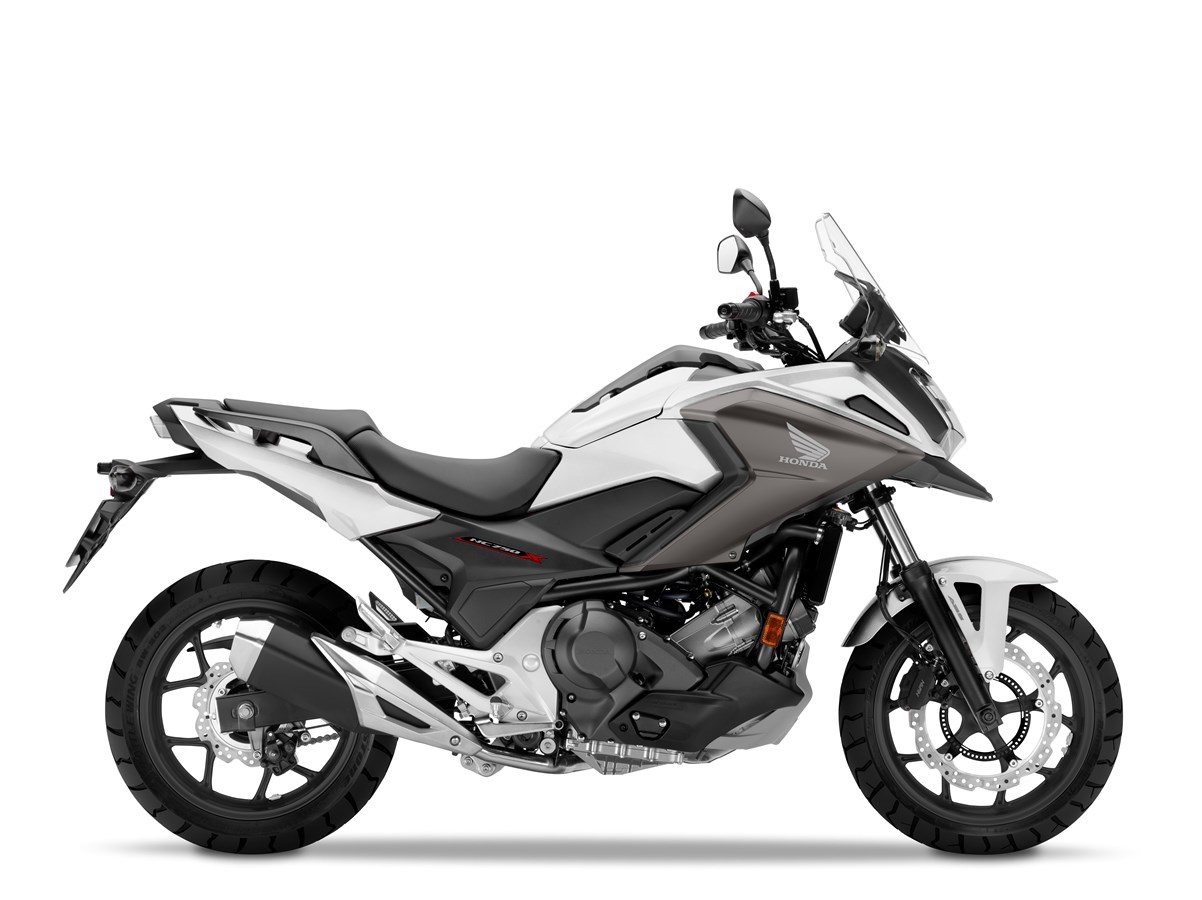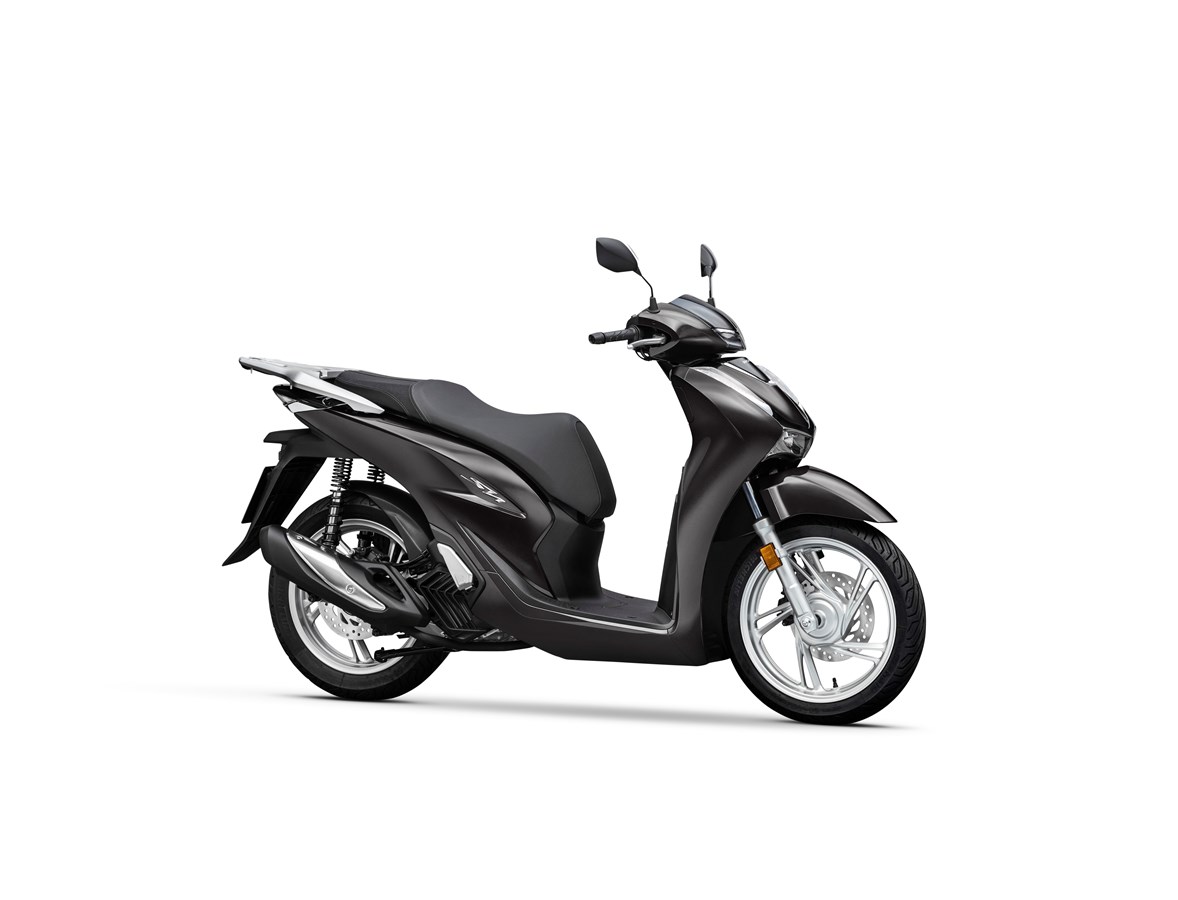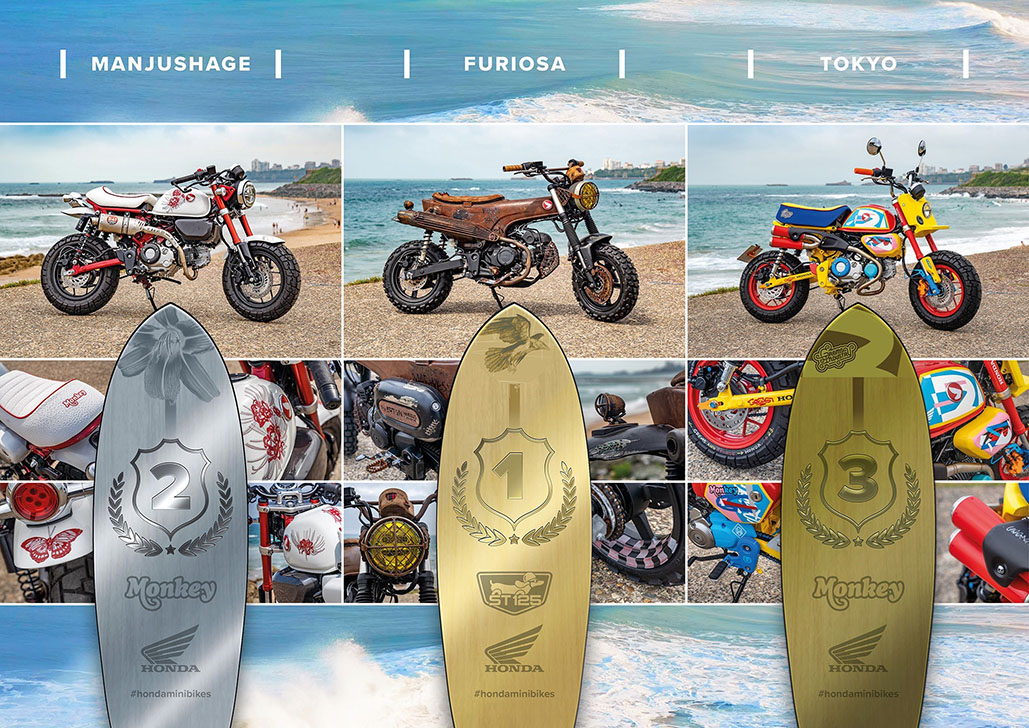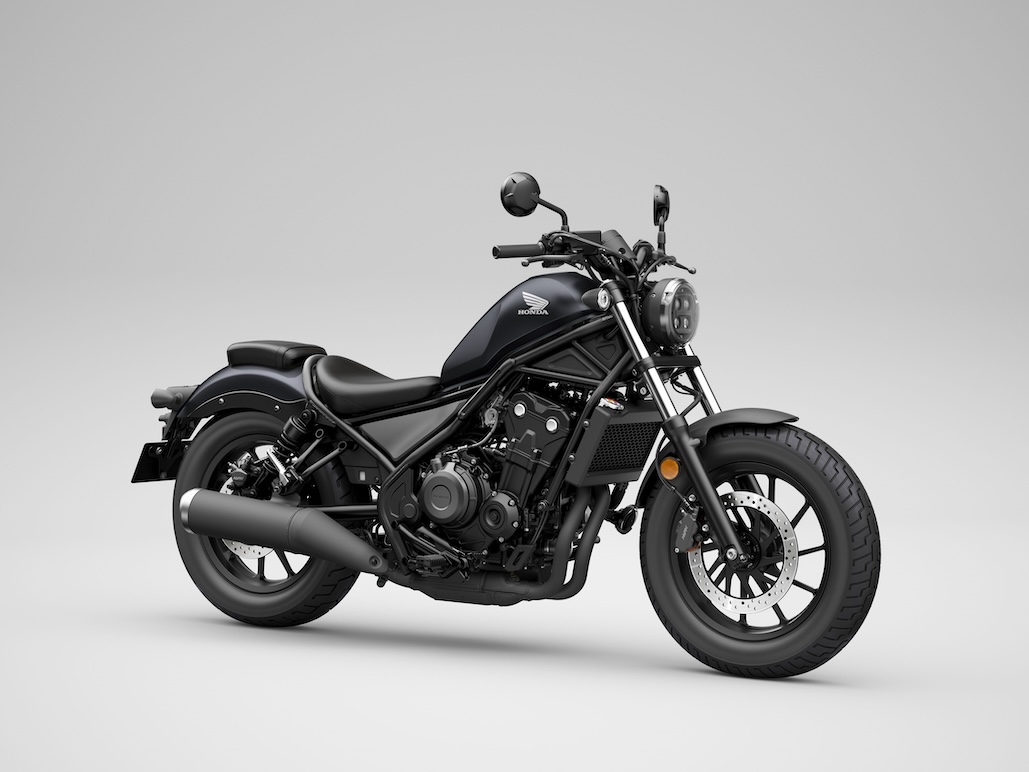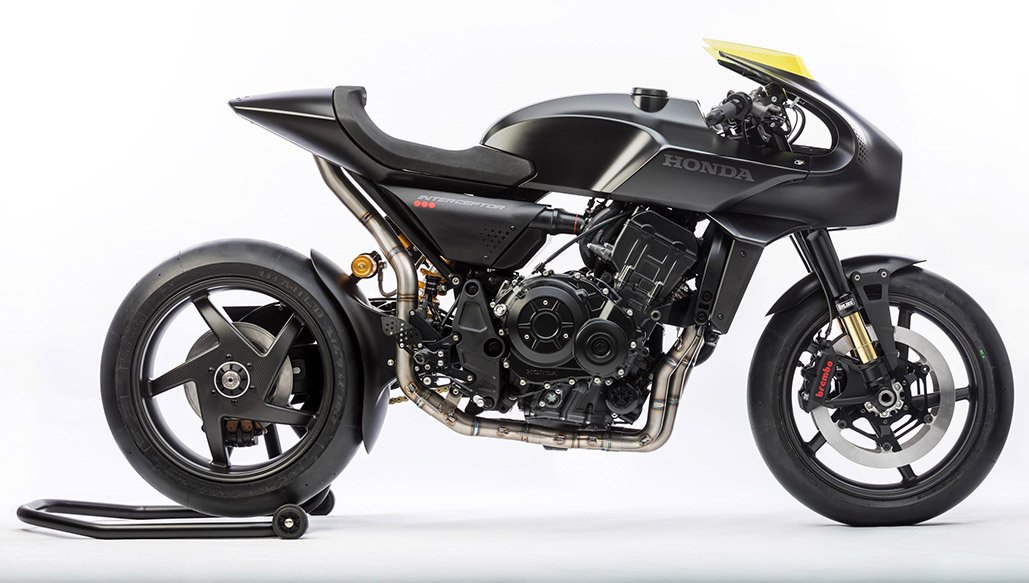2020 HONDA REBEL
 The Rebel, Honda’s A2 licence-friendly 500cc parallel twin-cylinder compact cruiser benefits from revised suspension, full LED lighting, a new gear position indicator, slipper clutch and more comfortable seat. A new exhaust helps ensure Euro5 compliance.
The Rebel, Honda’s A2 licence-friendly 500cc parallel twin-cylinder compact cruiser benefits from revised suspension, full LED lighting, a new gear position indicator, slipper clutch and more comfortable seat. A new exhaust helps ensure Euro5 compliance.
For 20YM, a new version with a set of factory-fitted accessories is available including a headlight cowl, all-black fork covers and gaiters, plus a diamond-stitch style seat.
1. Introduction
For many riders in their early 20s – Generation Z, who have grown up through the digital age – motorcycles mean so much more than just transport. They need to represent a lifestyle, an attitude, and allow them to express their own individual identity. These riders’ expectations are different to those of the motorcycling mainstream and the machines that speak to them reflect this. They have to fit in with their life but must also contain the potential for further individualisation.
Mr Keita Mikura, the Large Project Leader (LPL) of the Honda Rebel understands this. He likes to play with the rules, creating machines that fuse tradition with groundbreaking new ideas and perspectives. His team has produced a custom motorcycle that showcases a classic, timeless look but is also imbued with a forward-looking, contemporary style all of its own. Accessible, easy to ride and easy to live with, the Rebel goes its own way but is also a blank canvas, ready for whatever its owner’s imagination has in store for it.
2. Model Overview
Development of the Rebel began in North America, with an outlook geared toward firing the imagination of a younger generation of riders in a different way to traditional cruiser motorcycles. Powered by a 471cc parallel twin-cylinder engine, with strong bottom end torque and a smooth, linear power delivery, the Rebel is A2 licence friendly. It’s also slim, with a low seat height and therefore easy to manage at low speeds. The riding position is relaxed and neutral, with gently outstretched arms matched to mid-mounted footpegs.
The Rebel’s tubular steel frame draws fresh, contemporary lines into stripped-back, fat-tyred ‘bobber’ style. Blacked out to the maximum, with the minimum of paint, it also switches from solo-only to pillion-possible via two bolts.
For 2020, the Rebel gets more comfort and practicality thanks to a revised seat and suspension settings, plus a gear position indicator. Both the headlight and tail-light are new, and the addition of new LED indicators means all lighting is now LED.
Refinements to the exhaust system, including a new exhaust sensor ensure the Rebel is fully Euro5 compliant.
3. Key Features
3.1 Equipment & Styling
- Lean and low ‘bobber’ styling
- All lighting now LED, including indicators
- New Matte Jeans Blue Metallic colour
- New gear position Indicator
- New factory fitted accessory kit available
- Negative LCD display with white backlight
- Pillion pad and rear pegs easily removed for customisation
Two key words ran headlined throughout the Rebel’s development programme: ‘SIMPLE’ and ‘RAW’. But to do so much with so little is an art form in itself, an exercise in minimalist design where every detail matters.
And the Rebel does not disappoint; rolling on fat tyres, its low and lean ‘bobber’ silhouette – crowned by the steeply raked 11.2L fuel tank and fat handlebars – sits the rider firmly ‘in’ the machine. From every angle of its stripped form it expresses an off-beat individuality.
Everything that can be is blacked out, which highlights the Rebel’s lithe design as well as underlining the subtle paintwork. All lights are now LED, and the evocative round headlight features a compact 175mm diameter lens and die-cast aluminium mount. The new ultra-thin oval tail-light and license plate light match the Rebel’s low-down stance; new mini circular LED indicators measure only 55mm in diameter, with a circular position light included in the front indicators.
The speedo is a compact 100mm dial with negative LCD display and white backlight and is both striking and effective, and for 2020, features a new gear position indicator and fuel consumption display. The ignition remains housed below the left side of the fuel tank
The Rebel is available in the following colour options:
- **NEW** Matte Jeans Blue Metallic
- Graphite Black
- Matte Axis Grey Metallic (available with factory-fitted accessory kit)
- Millennium Red
The pillion pad and rear footpegs are easily removed, and for 2020, the accessories line-up has been boosted, with new rear rack, backrest, tank pads and meter visor; a nylon saddlebag option is also now available alongside the existing leather ones.
A new version with the following factory fit accessories will also be available: headlight cowl with smoke screen, retro front fork covers and gaiters, and a special diamond-stitch style seat.
3.2 Engine
- Euro 5 compliant 471cc liquid cooled parallel twin
- Torque heavy bottom-end output
- New assist / slipper clutch
- New LAF exhaust sensor helps meet Euro 5 regulations
- A2 licence compatible
- 120mm ‘shotgun’ style exhaust
The Rebel’s 471cc 8-valve, liquid-cooled parallel twin-cylinder engine is drawn from the sporty CBR500R. For cruising duties, revised PGM-FI fuel injection mapping and different valve and ignition timings mean its character is shifted away from the high rpm-focused performance of the CBR to a torque-heavy bottom-end output, with smooth and linear delivery throughout the rev-range. Punchy maximum torque of 43.3Nm torque @ 6,000rpm combines with peak power of 34kW @ 8,500rpm.
It’s a power unit that strikes a great balance between physical size and flexible output. Bore and stroke is set at 67mm x 66.8mm with compression ratio of 10.7:1. Internally the cylinder head uses roller rocker arms; shim-type valve adjustment allows them to be light, for lower valve-spring load and reduced friction.
A silent (SV Chain) cam chain has the surface of its pins treated with Vanadium, reducing friction with increased protection against dust. Inlet valve diameter is 26.0mm with exhaust valve diameter of 21.5mm.
Friction is reduced by the addition of striations on the piston skirt (a finish that increases surface area, introducing gaps in which oil can flow for better lubrication). An AB 1 salt bath process, used after isonite nitriding, forms a protective oxidisation membrane.
The crankshaft pins are phased at 180° and a primary couple-balancer sits behind the cylinders, close to the bike’s centre of gravity. The primary and balancer gears use scissor gears, reducing noise. The crank counterweight is specifically shaped for couple-balance and its light weight allows the engine to spin freely, with reduced inertia.
The crankcases use centrifugally cast thin-walled sleeves. Their internal design reduces the ‘pumping’ losses that can occur with a 180° phased firing order. A deep oil sump holds 3.2L. Slick to use up or down the six-speed gearbox is designed to offer effortless changes, especially around town. For 2020, a new assist-and-slipper clutch makes the shift even smoother, while reducing clutch lever operation load by 30%.
The 2-1 exhaust scrubs spent gases in its catalyzer, which then speeds them through its first chamber into the second resonator chamber. A new LAF sensor and improvements to the 120mm diameter ‘shotgun’ style muffler help the Rebel reach Euro5 compliance. The sound produced has a heavy-duty pulsing feel that fits the torque delivery
3.3 Chassis
- Low slung tubular steel frame
- Revised fork and rear spring rates
- Rear shock now nitrogen charged, with reshaped damper rubbers, for firmer action
To support the Rebel’s low-slung look its attractive tubular steel frame grips the engine in three places and is designed to be as narrow as possible around the rider’s inseam. For 2020, the revised fork spring rates and oil quantities bring more compliant damping for a smoother ride. Trail is set at 110mm with 28° rake; the 30° off-set of the forks, combined with 1490mm wheelbase, allows a low 690mm seat height; mid-mounted footpegs help ensure a natural riding position, with balanced and neutral steering.
The frame includes an innovative rear loop that separates the thicker seat from the textured metal mudguard; the bolt-on cast aluminium subframe provides further scope for customisation.
At 230mm apart the 41mm front fork stanchions are set wide for handling rigidity, comfort and style. The tubular steel swingarm has a 45mm diameter and works twin shock absorbers that feature 5 step preload settings. For 2020, the shock is now nitrogen-charged, with revised spring rate and reshaped damper rubbers for firmer, more consistent damping.
Dunlop tyres are fitted as standard sized 130/90-16 front and 150/80-16 rear. The style of the 16-inch cast aluminium wheels is crisp and simple, with the 296mm front disc acting as mirror to the spoke pattern. A twin-piston front caliper is matched by a single-piston rear.
4. Technical Specifications
| ENGINE | |
| Type | Liquid-cooled, DOHC |
| Engine Displacement (cm³) | 471cc |
| No. of Valves per Cylinder | 4 |
| Bore ´ Stroke (mm) | 67 x 66.8 |
| Compression Ratio | 10.7:1 |
| Max. Power Output | 34kW/8,500rpm |
| Max. Torque | 43.3Nm/6,000rpm |
| Oil Capacity | 3.2 litres |
| FUEL SYSTEM | |
| Carburation | PGM-FI |
| Fuel Tank Capacity | 11.2L |
| Fuel consumption | 27km/litre |
| ELECTRICAL SYSTEM | |
| Starter | Electric |
| Battery Capacity | 12V |
| ACG Output | 0.5kW |
| DRIVETRAIN | |
| Clutch Type | Wet multiplate |
| Transmission Type | 6-speed |
| Final Drive | Chain |
| FRAME | |
| Type | Steel Diamond |
| CHASSIS | |
| Dimensions (LxWxH) mm | 2,205 x 820 x 1,090 |
| Wheelbase | 1490mm |
| Caster Angle | 28° |
| Trail | 110 |
| Seat Height | 690mm |
| Ground Clearance | 125mm |
| Kerb Weight | 191kg |
| Turning radius | 2.8m |
| SUSPENSION | |
| Type Front | 41mm Telescopic forks |
| Type Rear | Showa twin shock |
| WHEELS | |
| Rim Size Front | 16M/C x MT3.00 |
| Rim Size Rear | 16M/C x MT3.50 |
| Tyres Front | 130/90-16M/C 67H |
| Tyres Rear | 150/80-16M/C 71H |
| BRAKES | |
| ABS System Type | Two channel |
| INSTRUMENTS & ELECTRICS | |
| Instruments | Digital |
| Headlight | LED |
| Taillight | LED |
Please note that all specifications are provisional and subject to change without notice. Fuel consumption figures provided are results obtained by Honda under standardised testing conditions prescribed by WMTC. Tests are conducted on a rolling road using a standard version of the vehicle with only one rider and no additional optional equipment. Actual fuel consumption may vary depending on how you ride, how you maintain your vehicle, weather, road conditions, tire pressure, installation of accessories, cargo, rider and passenger weight, and other factors.








